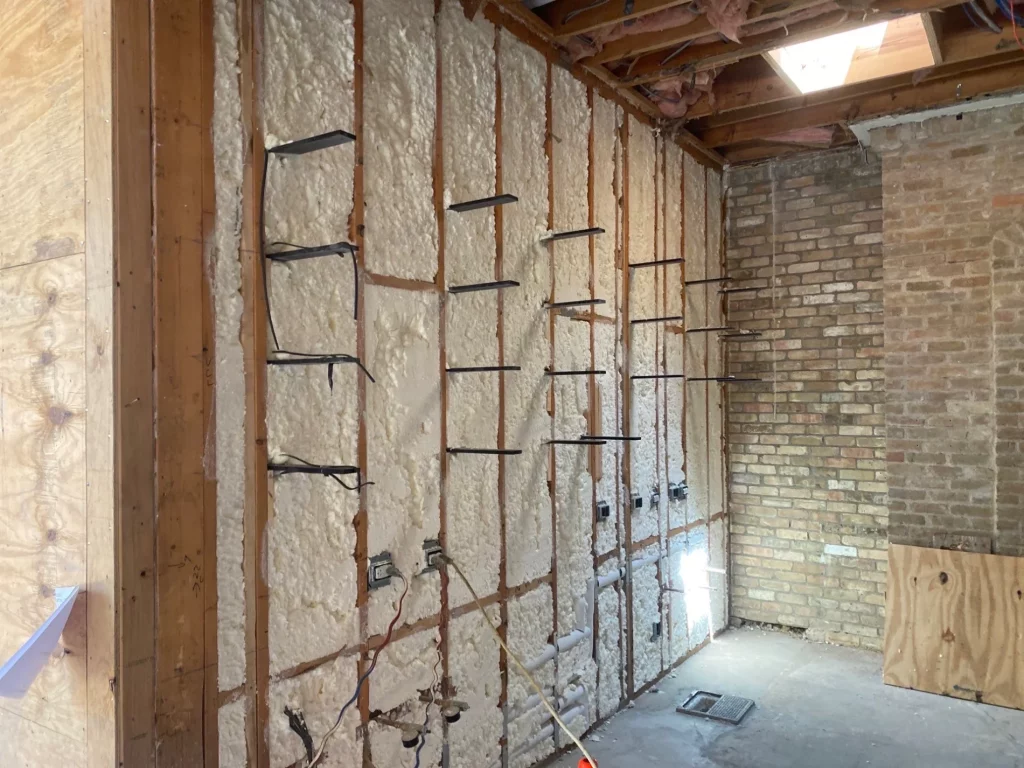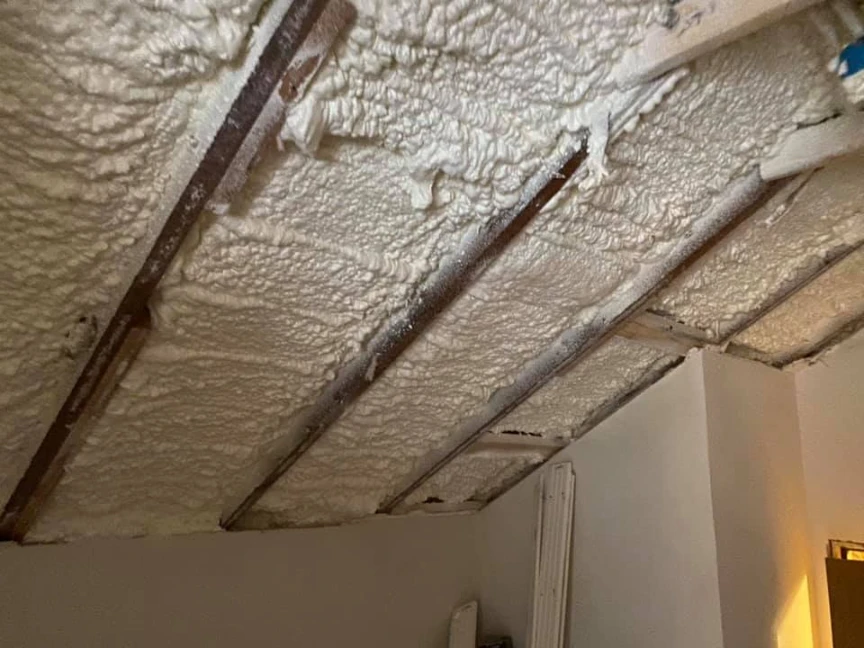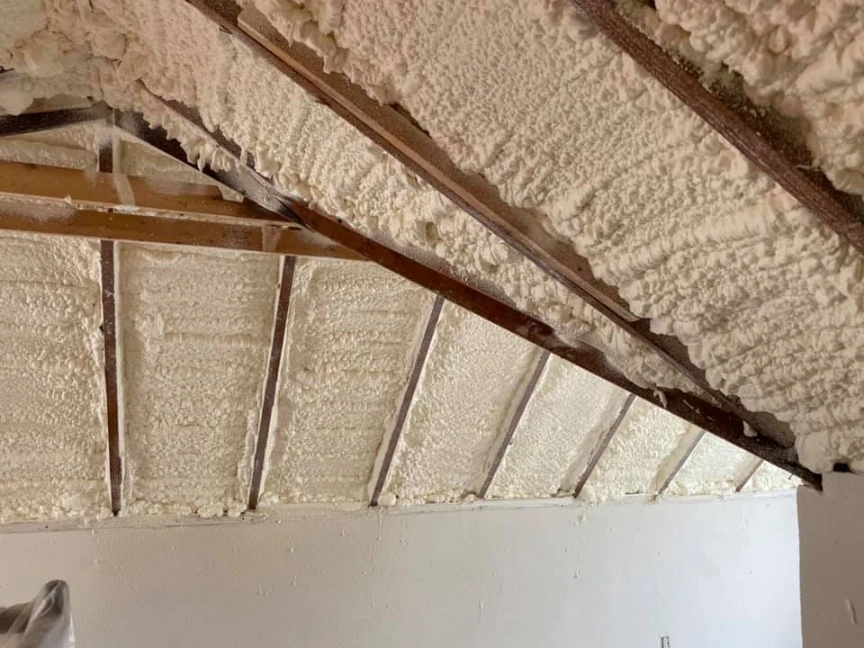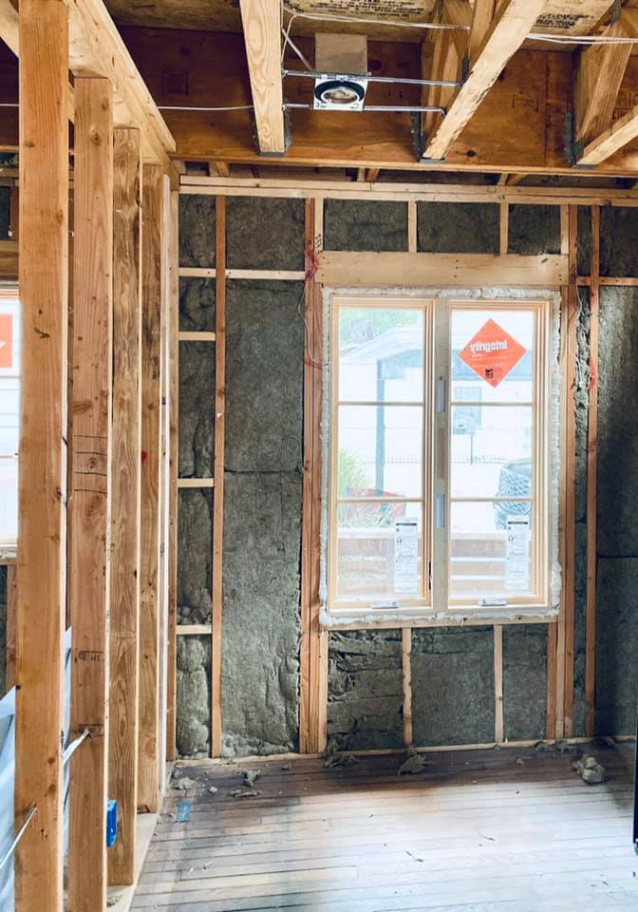Proper insulation solution is one of the most effective ways to manage energy costs and maintain comfort in a Canyon Lake home, particularly when drafty windows are part of the equation. While old windows allow for constant air leakage, a well-insulated building envelope acts as a critical barrier, slowing the transfer of heat. This means the air your HVAC system works hard to cool or heat stays inside longer, reducing the system’s workload and lowering utility bills. Even without replacing the windows, upgrading insulation in the attic and walls can significantly counteract the energy loss caused by drafts.
This article will explore the direct relationship between insulation and leaky windows, outline the best insulation materials for the Texas Hill Country climate, and detail the other benefits that come with a properly insulated home. The information provided is based on years of hands-on experience helping homeowners in the Canyon Lake area address these specific challenges.
The Connection Between Drafty Windows and Your Energy Bills
Drafty windows create a constant cycle of energy loss. In the summer, hot Texas air seeps in, while cooled indoor air escapes. In the winter, the reverse happens. This forces your heating and cooling systems to run almost continuously to maintain the temperature set on your thermostat. According to the U.S. Department of Energy, heat gain and loss through windows can be responsible for 25% to 30% of a home’s heating and cooling energy use.
When a home is poorly insulated, this problem gets much worse. Heat doesn’t just transfer through the glass but also radiates through walls and ceilings. Without a thermal barrier, the entire structure struggles to resist temperature changes. Insulation works by trapping pockets of air, which slows down the movement of heat. This keeps the heat out during summer and holds it in during winter, directly reducing the impact of those drafty windows on your HVAC system’s performance and, ultimately, your monthly bills.
How Insulation Works to Counteract Air Leaks
Think of insulation as the primary defense for your home’s thermal envelope. While windows are openings in that defense, a strong surrounding structure makes a huge difference. Insulation materials are rated by their R-value, which measures their ability to resist heat flow. The higher the R-value, the better the insulation.
Modern insulation, especially materials like spray foam, does more than just resist heat. It also creates an air barrier. By expanding to fill every crack and crevice in a wall cavity or attic floor, it stops the air movement that carries heat and moisture. While it can’t seal the window frame itself, it stops drafts from coming through other weak points in the walls, like around electrical outlets or plumbing penetrations.
- Bonus Tip: The attic is often the most critical place to start. In summer, the sun beats down on your roof, and that heat radiates downward. In winter, heated air rises and escapes through a poorly insulated attic. Improving attic insulation can provide the most significant and immediate improvement in comfort and energy efficiency.
Choosing the Right Insulation for the Texas Hill Country
The climate around Canyon Lake, with its hot, humid summers and occasional cold spells, demands specific performance from insulation. Not all types are created equal, and the right choice depends on your home’s construction, budget, and specific needs.
| Insulation Type | Typical R-Value (per inch) | Pros for Canyon Lake Climate | Cons for Canyon Lake Climate |
|---|---|---|---|
| Open-Cell Spray Foam | 3.5 – 3.8 | Excellent air sealant, allows moisture to pass through for drying, great sound dampener. | Lower R-value per inch than closed-cell, not a vapor barrier. |
| Closed-Cell Spray Foam | 6.0 – 7.0 | High R-value, acts as an air and vapor barrier, adds structural rigidity. | Higher cost, less permeable (can trap moisture if installed incorrectly). |
| Fiberglass (Blown-in) | 2.2 – 2.9 | Cost-effective, good for topping up existing attic insulation, non-combustible. | Can lose R-value if compressed, susceptible to air movement, can hold moisture. |
| Cellulose (Blown-in) | 3.2 – 3.8 | Made from recycled materials, good fire resistance (treated), conforms to spaces well. | Can settle over time, may absorb moisture if a leak occurs. |
For homes struggling with drafts, spray foam insulation in Canyon Lake, TX is often an excellent option because its primary advantage is air sealing. By stopping air movement within the walls and attic, it directly addresses the problem of infiltration, making the entire home feel tighter and more comfortable.
Beyond Energy Savings: Other Benefits of Proper Insulation
While lower energy bills are a major motivator, upgrading your home’s insulation in Canyon Lake, TX brings several other advantages that improve your quality of life.
- Consistent Indoor Comfort: A well-insulated home eliminates hot and cold spots. Rooms stay at a more consistent temperature year-round, making the entire house more comfortable to live in.
- Moisture Management: Humidity is a constant battle in Central Texas. Certain insulation types, like closed-cell spray foam, act as a vapor barrier that prevents moisture from moving through the walls and condensing, which helps prevent mold and mildew growth. Information from the Building Science Corporation explains how these barriers function to protect a home’s structure.
- Noise Reduction: Insulation is a natural sound dampener. Filling wall cavities with dense insulation can significantly reduce the amount of noise you hear from outside, whether it’s traffic, neighbors, or weather.
- Extended HVAC Lifespan: Because insulation reduces your HVAC system’s runtime, it also reduces wear and tear on the equipment. This can lead to fewer repairs and a longer lifespan for one of the most expensive systems in your home.
Things to Consider Before Making a Decision
Before you invest in new insulation, it’s important to evaluate your property and your goals.
- Get a Home Energy Assessment: A professional assessment can pinpoint exactly where your home is losing the most energy. It might confirm that the attic is the biggest problem, or it could reveal leaky ductwork or uninsulated floors over a crawlspace. This data allows you to make an informed decision.
- Understand Your Budget: The cost of insulation varies widely by type and the size of the area being treated. While high-performance options like spray foam have a higher upfront cost, their long-term energy savings often provide a strong return on investment.
- Evaluate Existing Insulation: What do you have now? Is it old, compressed, or damaged? In some cases, new insulation can be installed on top of the old material. In other situations, particularly if there has been moisture or pest damage, the old insulation should be removed first.
- Consider Future Plans: If you plan to replace your drafty windows in the next few years, that may influence your insulation strategy. A comprehensive plan that addresses both insulation and windows will always yield the best results.

Frequently Asked Questions About Insulation
Should I insulate or replace my windows first?
Insulating your attic and walls typically offers a faster and more significant return on investment. The ENERGY STAR program suggests that homeowners can save an average of 15% on heating and cooling costs by air sealing and properly insulating. Since this addresses the entire building envelope, it provides a more substantial benefit than just replacing a few windows.
Will new insulation fix my drafty windows?
No. Insulation treats the building envelope (walls, ceiling, floors), while drafts come from the window unit itself (frame, sash, or seals). Insulation reduces the impact of those drafts by making your home better at retaining its temperature, but it won’t stop the air from leaking around the window.
How much can I really save?
Savings depend entirely on your home’s current condition, your energy habits, and the extent of the insulation upgrade. However, the reduction in HVAC runtime is immediate and noticeable, providing both financial savings and a clear improvement in comfort.
What is the best R-value for a Canyon Lake attic?
For the Central Texas climate zone, an attic R-value of R-38 to R-60 is generally recommended for optimal performance.
Does spray foam insulation off-gas or have a smell?
Professional-grade spray foam has a distinct odor during installation. However, once it is fully cured (typically within 24 hours), it becomes inert and odorless. Proper ventilation during and after application is standard procedure.
Can I install insulation myself?
While DIY-friendly materials like fiberglass batts are available, achieving proper air sealing and ensuring correct installation can be difficult. Blown-in and spray foam insulation require specialized equipment and expertise to be installed safely and effectively.
How does insulation help during a Texas summer power outage?
A well-insulated home slows down heat transfer dramatically. During a power outage, it will stay cooler for much longer than a poorly insulated house, providing a safer and more comfortable environment until the power is restored.
Get a Clear Path to a More Comfortable Home
In a Canyon Lake home with drafty windows, upgrading insulation is a powerful step toward better energy efficiency and comfort. It strengthens your home’s thermal boundary, directly countering the negative effects of air leaks from aging windows. By reducing the strain on your HVAC system, you’ll see lower energy bills, enjoy a more consistent indoor environment, and create a clear path to a more comfortable home. The key is to evaluate your property’s unique needs and choose a solution that aligns with your long-term goals.
A professional assessment can remove the guesswork and provide a clear plan of action. For a detailed evaluation of your property, contact the team at Stellrr Insulation & Spray Foam. You can reach an expert by calling (512) 710-2839 or sending an email to info@stellrr.com to discuss your home’s comfort and efficiency challenges.
Sources
- U.S. Department of Energy – Provides data on energy loss through windows and general information on residential energy efficiency.
- Building Science Corporation – Offers in-depth articles and research on building materials and systems, including the proper use of vapor barriers.
- ENERGY STAR – A program run by the U.S. Environmental Protection Agency that provides credible information on energy savings for homeowners.





